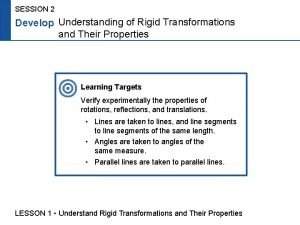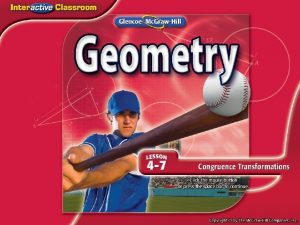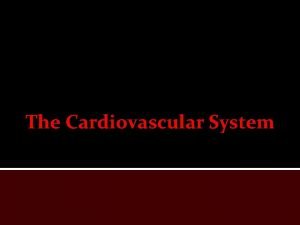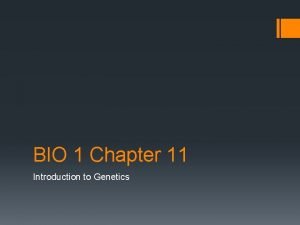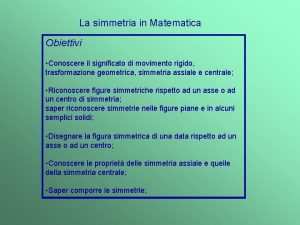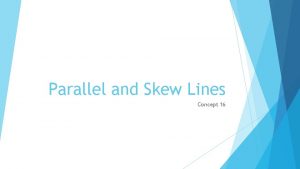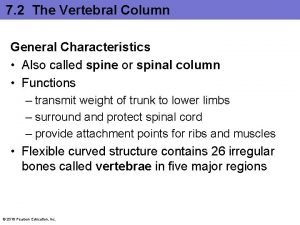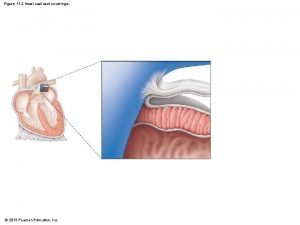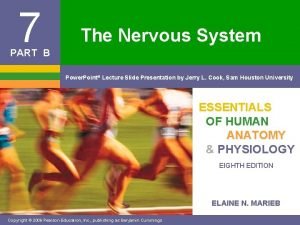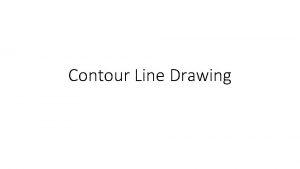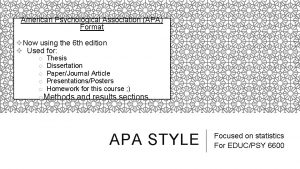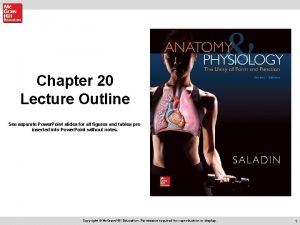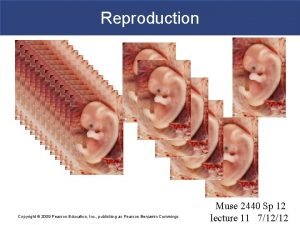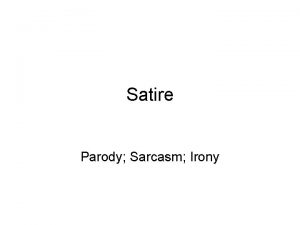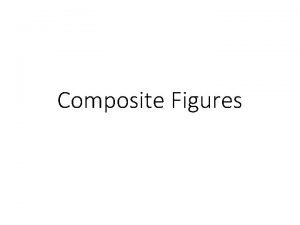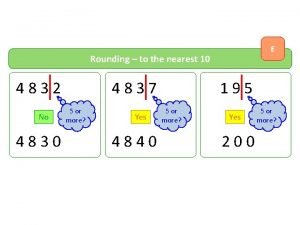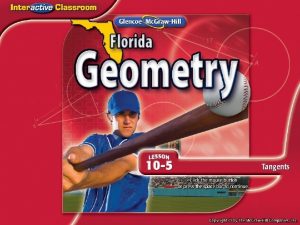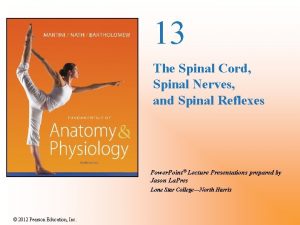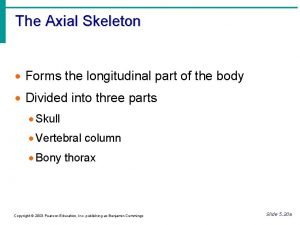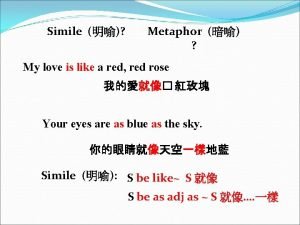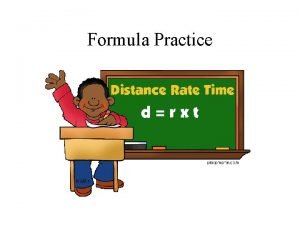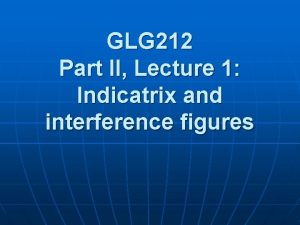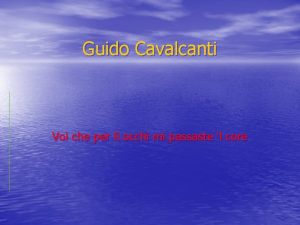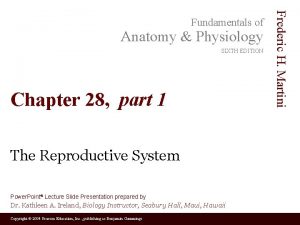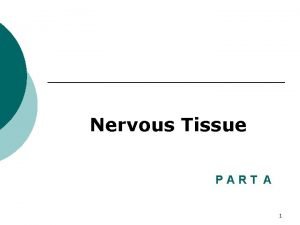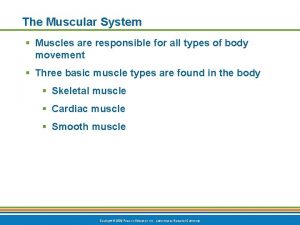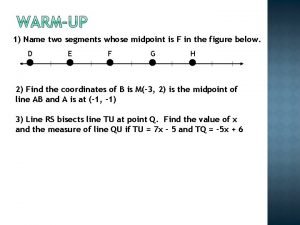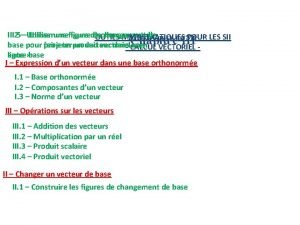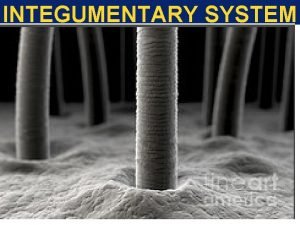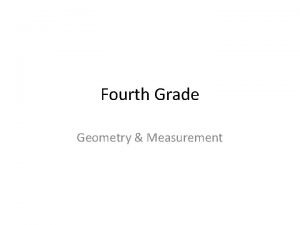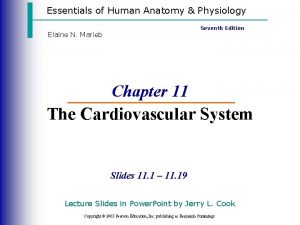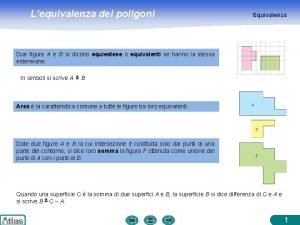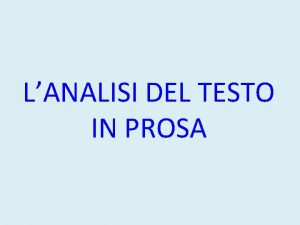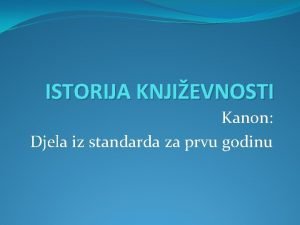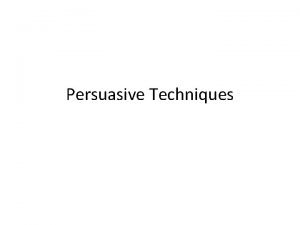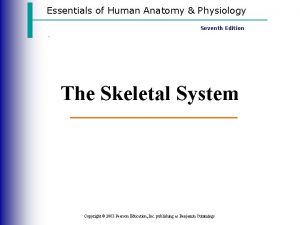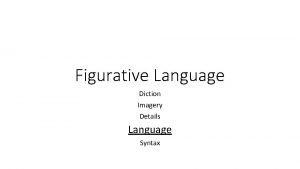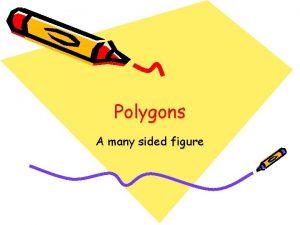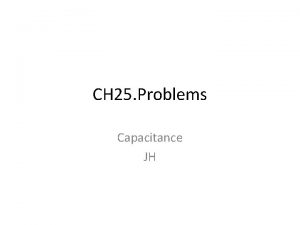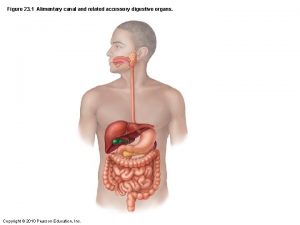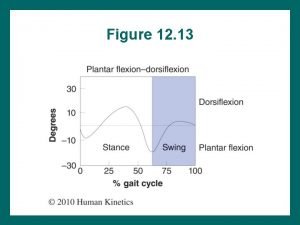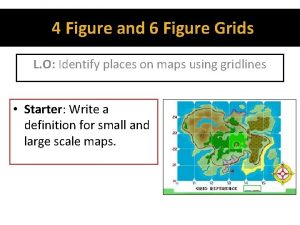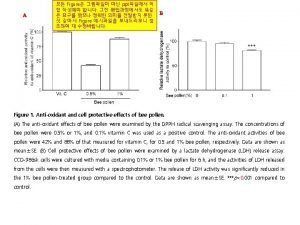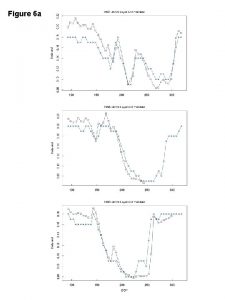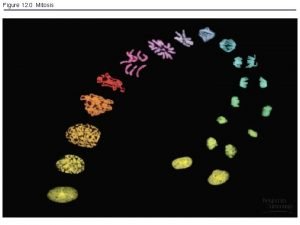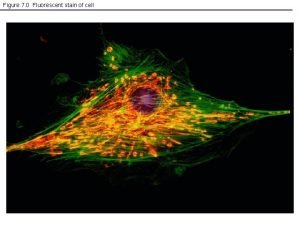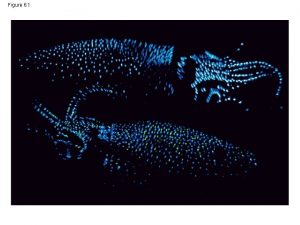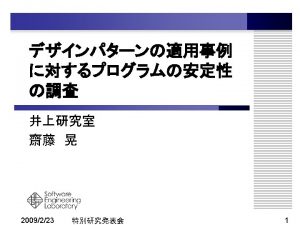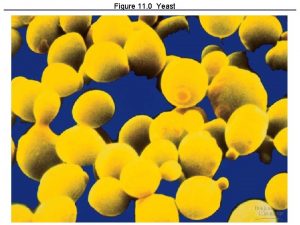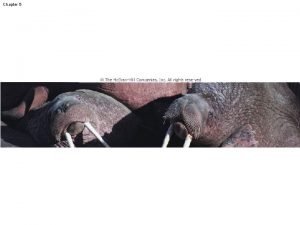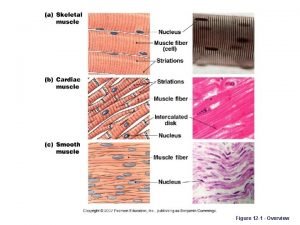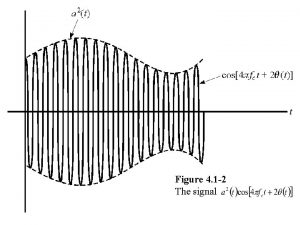Figure 18 26 Figure 18 27 a Figure





















































































































- Slides: 117

Figure 18. 26

Figure 18. 27 a

Figure 18. 27 b

Figure 18. 28 a

Figure 18. 28 b

Figure 18. 28 c

Figure 18. 29

Figure 18. 30

Figure 18. 31

Figure 18. 32

Figure 18. 33 a

Figure 18. 33 b

Figure 18. 33 c

Figure 18. 34

Figure 18. 35

Figure 18. 36

Figure 18. 37 a

Figure 18. 37 b

Figure 18. 38

Figure 18. 39 a

Figure 18. 39 b

Dead Bug Exercises • Not all back patients need to do dead bug exercises. • Difficulty with these exercises means poor stabilization. • Exercises should be part of the program until performed correctly. • Only the extremities move during exercise.

Dead Bug Exercise Substitutions • • Hips are allowed to roll. Patient rolls from side to side. Lumbar spine moves. Abdominal and gluteal muscles do not remain tense. • Pelvic neutral is not maintained.

Dead Bug Exercise Progression 1. Trunk stabilization in supine with arm or leg movement, then both 2. Trunk stabilization in quadruped with arm or leg movement, then both 3. Trunk stabilization in standing with arm or leg movement, then both 4. Trunk stabilization during functional activities

Figure 18. 40

Figure 18. 41

Figure 18. 42

Figure 18. 43

Figure 18. 44

Figure 18. 45

Core Stability Also known as: • Pelvic stability • Spinal stability • Trunk stability • Lumbar stability

Systems of Support for Stability • • Inert tissues offer passive support. Contractile tissues provide active support. Neural tissues coordinate sensory feedback. One or more systems may compensate for another system’s deficiencies, but increased stresses can result.

Added Sources of Stabilization • • Thoracolumbar fascia Quadratus lumborum Latissimus dorsi Gluteus maximus and medius

Stabilization of Lumbar Spine Abdominal muscles – Superficial (rectus abdominis): prime movers of trunk flexion, not stabilizers – Deep (transverse abdominis): primary stabilizers • Not often well conditioned • Primary stabilizers of trunk during overhead and lower-limb activity • Assistance from obliques

Stabilization • Spine patients should be assessed for posture • Stabilization requires strength of: – – Transverse abdominis Internal obliques Core muscles Multifidus Lateral and posterior hip muscles

Pelvic Stabilization • During sports: abdominal muscles and back extensors—essential for trunk stabilization to serve as base of support for arm and leg movement • In rehab: trunk stability before trunk muscle performance

Other Factors • Just as trunk stabilization serves as a platform for arm and leg activities, hip stabilization serves as a platform for trunk movement. • Consider hip extensors, abductors, and adductors in rehab.

Lumbar Neutral • Refers to overall movement of the lumbar spine, not movement between vertebrae • Lumbar neutral = midway between full flexion and full extension via anterior-posterior pelvic tilting • Basic to stabilization – Places minimal stress on tissues – Best position from which trunk functions

Finding Pelvic Neutral • • • Start in sitting, supine, or standing. Fingers on anterior superior iliac spine (ASIS). Roll pelvis as far as possible forward. Roll pelvis as far as possible backward. Rock from each extreme to find the middle of the motion.

First Exercise to Hold Pelvic Neutral • Start in supine hooklying position. • Place blood pressure cuff under lower lumbar spine. • Find pelvic neutral. • Inflate cuff to 40 mm. Hg. • Tighten gluteal muscles. • Tighten abdominal muscles. • Cuff inflation should remain steady throughout exercises

Exercise Cues to Facilitate Multifidus • Keep pelvic neutral position. • Tighten pelvic floor muscles: Tighten as if stopping urination midflow.

Exercise Cues to Facilitate Transverse Abdominis • Pull navel to spine. • Keep pelvic neutral position. • Place hand on ASIS or sternum or belly for feedback. • Pull in stomach harder as arm or leg moves away from body’s center. • Stop when position is lost.

Early Exercise • Start with feet off floor, hips and knees flexed. • Lower one foot, then the other. • Gradually land foot away from buttock.

Early Quadruped Exercise • Lift one leg, opposite arm. • Can add resistance.

Figure 14. 15 a

Figure 14. 15 b

Figure 18. 57 a

Figure 18. 57 b

Figure 14. 15 c

Figure 14. 15 d

Figure 14. 5

Figure 14. 16 a

Figure 14. 16 b

Figure 14. 16 c

Figure 14. 18 b

Figure 18. 60

Figure 18. 61 a

Figure 18. 61 b

Figure 18. 62

Additional Advanced Stabilization Exercises • • Seated stick motion on Swiss ball Prone stick motion on Swiss ball Jumping activities in pelvic neutral Kicking in pelvic neutral – Without pulley/Thera-Band™ resistance – With pulley/Thera-Band™ resistance • Walking running in pelvic neutral

Functional Activities • • • Sit-to-stand Bending Lifting Kicking: rotation from hips, not back Stair climbing Sport activities

Strengthening Exercises • • Aquatic exercises Swiss ball exercises Foam roller exercises Resistance exercises – – – Rubber tubing and bands Dumbbells Pulleys Machines Medicine balls

Figure 18. 46 a

Figure 18. 46 b

Figure 18. 46 c

Figure 18. 46 d

Figure 18. 47

Figure 18. 48

Figure 18. 49

Figure 18. 51 a

Figure 18. 51 b

Figure 18. 51 c

Figure 18. 51 d

Figure 18. 52

Figure 18. 53

Figure 18. 54

Figure 18. 55

Figure 18. 56 a

Figure 18. 56 b

Figure 18. 56 c

Figure 18. 56 d

Figure 18. 57 a

Figure 18. 57 b

Figure 18. 58

Figure 18. 59

Figure 18. 60

Figure 18. 61 a

Figure 18. 61 b

Figure 18. 62

Figure 18. 63

Coordination Agility Functional Activities • Coordination work is started once strength gains are made. • Trunk rotation, plyometrics, and multiplane movements are included. • Pelvic stability must be maintained throughout activity.

Figure 18. 64

Figure 18. 65 a

Figure 18. 65 b

Specific Treatment Application Guidelines for Spinal Injuries • Modalities • Early: – – Pelvic neutral, stabilization, and body mechanics Dead bug exercises Pool exercises Trunk flexibility and strengthening • Later: – What do you think some possible guidelines are? Why?

Sprains and Strains • • Cause: ? (Identify possibilities) Signs and symptoms (S/S): (Identify these) Treat pain and spasm first. Use soft-tissue and joint mobilizations. Correct posture and body mechanics. Begin strengthening after spasm is relieved. Emphasize trunk stabilizers and gluteals.

Spondylosis • Degeneration of the disc spaces between the vertebrae • Commonly associated with osteoarthritis

Spondylolysis Stress fracture to the pars interarticularis – Common in football players, weightlifters, and divers – Also referred to as “scottie dog fracture”

Spondylolisthesis Forward slippage of one vertebra in relation to another

Spondylosis, Spondylolysis, Spondylolisthesis • Cause: ? (identify these) • S/S: ? (identify these, based on your knowledge) • Involve lower lumbar spine • Are irritated with extension • Patient should avoid hyperextension motions. • Patient must be taught to maintain posterior pelvic tilt. • Patient must maintain posterior pelvic stability and strengthen abdominal muscles.

Referred Lower-Extremity Pain • Symptoms down the leg do not necessarily mean a disc problem, but this is a possibility • Facet injuries, muscle spasm, and active trigger points • Differential diagnosis before treatment is performed

Disc Lesions • Cause: ? (Identify these) • S/S: ? (Identify these) • Avoid forward bending, side-bending, and twisting. • Maintain pelvic neutral. • If sciatic pain worsens, reevaluate treatment.

Disc Lesions and Sciatica Program considerations: • Centralization of pain • If sciatic pain worsens, must reevaluate the most recently performed exercises for possible incorrect execution and for appropriateness • Patients who have undergone microdiscectomies start treatment about 1 week postoperatively and follow a course of treatment similar to that for patients who have not had surgical correction.

Pathology: Facet Injury Locked facet – Open – Closed

Facet: Positional Dysfunction • • • = Position the facet is held in following trauma. Motion restriction: What the facet can’t do. Is always contralateral to a motion restriction. Restriction can occur in flexion or extension. Facet in flexion = open (facet surfaces are apart). Facet in extension = closed (facet surfaces are together).

Facet Restrictions If facet is restricted in flexing, it is stuck in extension (closing). – Flexion = motion restriction – Extension = positional dysfunction If facet is restricted in extending, it is stuck in flexion (opening). – Extension = motion restriction – Flexion = positional dysfunction

Coupled Movements With Facet Impingement • Rotation and side-bending are coupled movements; therefore they will have motion restriction and positional dysfunctions. • Stuck in extension: Rotation and side-bending = opposite side of problem facet. • Stuck in flexion: Rotation and side-bending = same side of problem facet.

Examples If right facet is stuck in extension, right rotation, and right side-bending, then motion restriction will be in: – Flexion – Left rotation – Left side-bending (continued)

Examples (continued) • If right facet is stuck in flexion, then restricted motion will be in: – Extension – Right rotation – Right side-bending

Facet Injury: S/S • Radiating facet pain can mimic dermatomal distribution into the lower extremity. • Palpation of the specific spinous process causes tenderness.

Facet Injury: Causes • Impingement – Facet joint capsule and synovium impinged between joint surfaces – From sudden extension, side-bending, or rotation that may seem minor • Sprain – Trauma more profound – Tissue injury greater

Facet Impingement: Rx • Gentle ROM in pain-free range with gradual progression into painful ranges with traction • Avoid painful motions initially • Posteroanterior mobilizations on painful side

Facet Sprain: Rx • More conservative approach • Modalities; cervical collar • Gentle range of motion in pain-free range and joint mobilization following modalities to relieve muscle spasm, pain, edema

Figure 18. 70

Sacroilium Sacroiliac ring: – Sacrum – Two SI joints – Two hemipelvises • Ilium • Pubis • Ischium – Pubic symphysis joint (continued)

Sacroilium (continued) • Pelvic ring transfers weight bidirectionally. • Pelvic ring strength is directly related to fit and stability of sacrum. • Sacrum (anchored by sacroiliac joints) = keystone of pelvic ring.

Sacrum • Auricular surface • Thicker cartilage on sacrum • Transitions from puberty to adulthood: – Smooth to rough surface – Synovial to modified amphiarthroidal joint – Degenerates with age
 What is 6 figure grid reference
What is 6 figure grid reference Understand rigid transformations
Understand rigid transformations Solid and plane figures
Solid and plane figures An operation that maps an original figure onto a new figure
An operation that maps an original figure onto a new figure Art labeling activity: figure 14.1 (3 of 3)
Art labeling activity: figure 14.1 (3 of 3) Examples of oxymoron
Examples of oxymoron Figure 16-1 male reproductive system
Figure 16-1 male reproductive system Find the value of each variable in the given parallelogram
Find the value of each variable in the given parallelogram Find the perimeter of the figure
Find the perimeter of the figure Idiom vs hyperbole
Idiom vs hyperbole Figura equicomposta
Figura equicomposta Art-labeling activity: figure 19.24c
Art-labeling activity: figure 19.24c Name the intersection of line qz and segment wu
Name the intersection of line qz and segment wu Anatomy and physiology coloring workbook figure 14-1
Anatomy and physiology coloring workbook figure 14-1 Bed figure
Bed figure The sun was salmon and hazy in the west figure of speech
The sun was salmon and hazy in the west figure of speech The punnett square in figure 11-2
The punnett square in figure 11-2 Literary terms hyperbole
Literary terms hyperbole Figure simmetriche
Figure simmetriche In the figure m 9=80 and m 5=68
In the figure m 9=80 and m 5=68 Personification poem meaning
Personification poem meaning Comparing poetry poetic devices
Comparing poetry poetic devices Vertbral arch
Vertbral arch Figure 11-4
Figure 11-4 Figure ground
Figure ground Figure 7 letters
Figure 7 letters Cerebrum figure
Cerebrum figure Bella schiava figure retoriche
Bella schiava figure retoriche Whats a contour drawing
Whats a contour drawing Personification in let it go
Personification in let it go Figure 12-1 provides an overview of the lymphatic vessels
Figure 12-1 provides an overview of the lymphatic vessels Apa image caption
Apa image caption A figure of speech
A figure of speech Vasoreflexes
Vasoreflexes Figure 28-1 the male reproductive system
Figure 28-1 the male reproductive system Perversity
Perversity Vestibulocochlear nerve
Vestibulocochlear nerve Composite shape definition
Composite shape definition What is metonymy and examples
What is metonymy and examples Art labeling activity figure 27.1
Art labeling activity figure 27.1 Parafrasi atto 3 adelchi
Parafrasi atto 3 adelchi 5872 rounded to the nearest hundred
5872 rounded to the nearest hundred Copy each figure and draw the common tangents
Copy each figure and draw the common tangents Supplemental figures
Supplemental figures Idiomatic diction
Idiomatic diction Neural circuits the organization of neuronal pools
Neural circuits the organization of neuronal pools Figure 5-7 bony thorax
Figure 5-7 bony thorax In this figure
In this figure Povrsina figure ogranicene krivama
Povrsina figure ogranicene krivama Aliteration examples
Aliteration examples Mrvice iz dnevnog boravka robotko
Mrvice iz dnevnog boravka robotko Canzone d'autunno
Canzone d'autunno Simile and metaphor
Simile and metaphor Sig figs
Sig figs Poesia a giacinto
Poesia a giacinto Find the area of the figure below
Find the area of the figure below Uniaxial indicatrix
Uniaxial indicatrix How to figure out sales tax from total
How to figure out sales tax from total Guido cavalcanti parafrasi
Guido cavalcanti parafrasi Figure 28-2 the female reproductive system
Figure 28-2 the female reproductive system Definition of epic poem
Definition of epic poem Sinestesia significato
Sinestesia significato A figurative image ______.
A figurative image ______. Label the different types of neuronal pools in the figure.
Label the different types of neuronal pools in the figure. The world is too much with us mood
The world is too much with us mood Figura a 4 lati
Figura a 4 lati Chapter 5 the skeletal system figure 5-13
Chapter 5 the skeletal system figure 5-13 Microscopic anatomy of skeletal muscle figure 6-2
Microscopic anatomy of skeletal muscle figure 6-2 Circle is a plane figure
Circle is a plane figure Janusian thinking
Janusian thinking Name the closed figure obtained.
Name the closed figure obtained. A figure consisting of two rays with a common endpoint
A figure consisting of two rays with a common endpoint Cardiac sphincter location
Cardiac sphincter location Ritratto della mia bambina saba pdf
Ritratto della mia bambina saba pdf Chemistry sig figs
Chemistry sig figs Prusik hitch
Prusik hitch Figure in un mazzo da 52 carte
Figure in un mazzo da 52 carte Gestalt principle of visual perception
Gestalt principle of visual perception What term designates groups or sets of beats
What term designates groups or sets of beats Assonanza
Assonanza Produit mixte
Produit mixte Integumentary system components
Integumentary system components How many faces does this figure have?
How many faces does this figure have? Figure 11-9 is a diagram of the hepatic portal circulation
Figure 11-9 is a diagram of the hepatic portal circulation Figure of speech examples of onomatopoeia
Figure of speech examples of onomatopoeia Figure equivalenti
Figure equivalenti 6 faces, 8 vertices each face is a rectangle
6 faces, 8 vertices each face is a rectangle Esempi di testi in prosa
Esempi di testi in prosa Rhythm in poetry
Rhythm in poetry Dan osvanu a ja skadar
Dan osvanu a ja skadar Usporedba u pjesmi
Usporedba u pjesmi Literary elements of romeo and juliet
Literary elements of romeo and juliet Chapter 11 the cardiovascular system figure 11-3
Chapter 11 the cardiovascular system figure 11-3 How to use repetition in a persuasive essay
How to use repetition in a persuasive essay Sens figur
Sens figur The wind yells while blowing.
The wind yells while blowing. Allusion figurative language
Allusion figurative language That man is an ogre simile or metaphor
That man is an ogre simile or metaphor Figurative language in poetry
Figurative language in poetry Figure 5-11 is a diagram of the articulated pelvis
Figure 5-11 is a diagram of the articulated pelvis Milton thou shouldst be living at this hour
Milton thou shouldst be living at this hour How to find volume of prisms and cylinders
How to find volume of prisms and cylinders Garden archetype examples
Garden archetype examples Syntax figurative language
Syntax figurative language Mtonymie
Mtonymie Precommand level
Precommand level Exmaple of alliteration
Exmaple of alliteration Many sided figure
Many sided figure Obim kvadrata i pravougaonika
Obim kvadrata i pravougaonika Figure 25-49 shows a parallel-plate capacitor
Figure 25-49 shows a parallel-plate capacitor Figures of speech allusion
Figures of speech allusion Examples of metonymy
Examples of metonymy Small intestine
Small intestine Pearson
Pearson Figure 12
Figure 12 8 figure grid reference example
8 figure grid reference example It is a surprise
It is a surprise Which part of the cell contains genetic material
Which part of the cell contains genetic material

